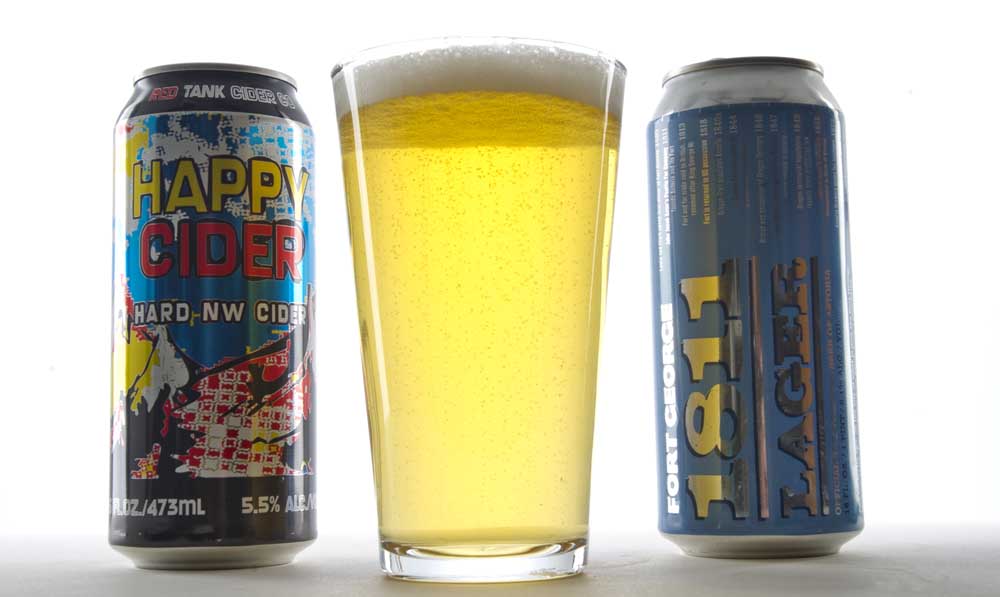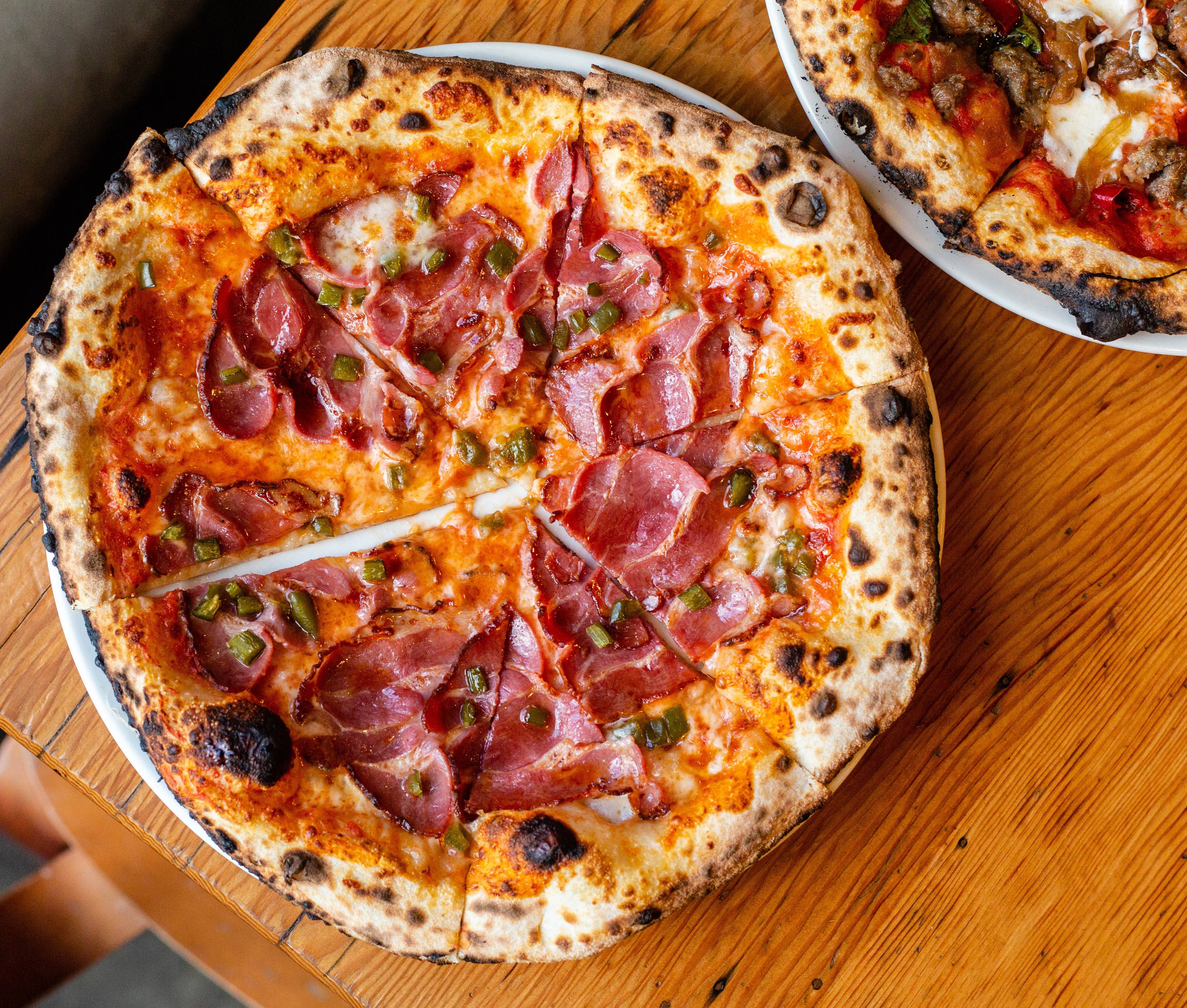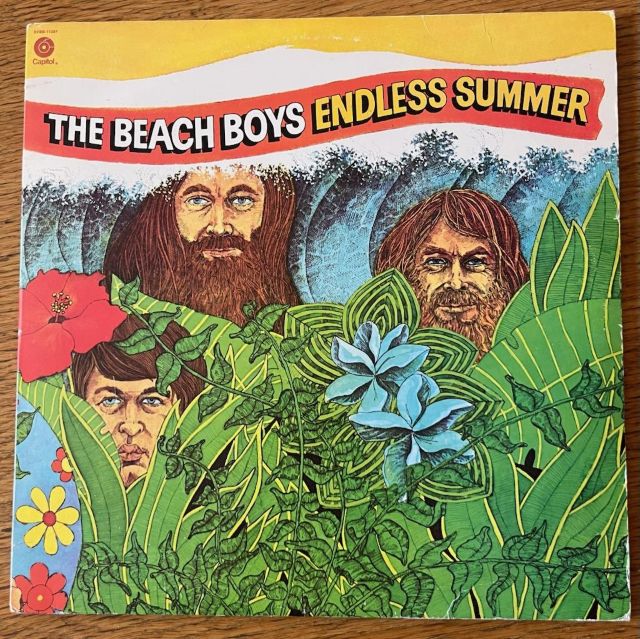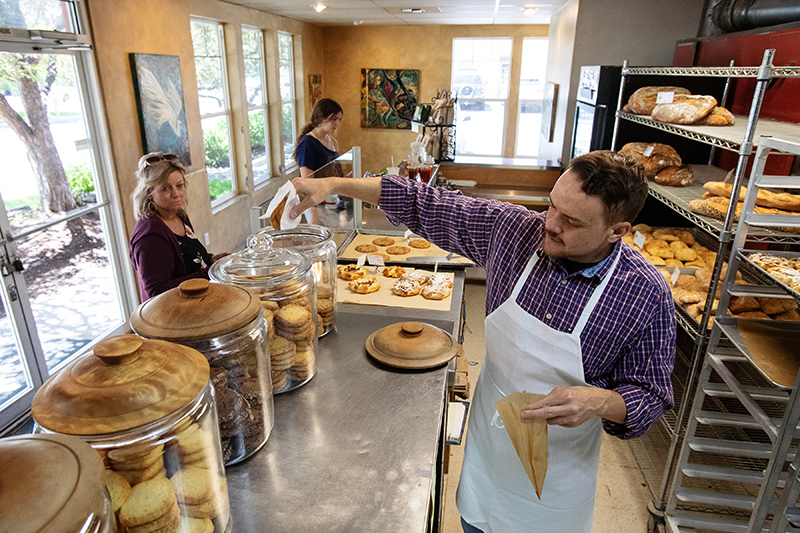Hunting for a Black and Tan in Central Oregon
Published 12:56 am Sunday, March 16, 2014

- Black and Tan variantsThe classic Black and Tan — a combination of Guinness Stout and Bass Pale Ale — has inspired other combinations. The Half and Half, left, combines Guinness and Harp Lager, and the Snakebite combines a lager and a cider.
There’s a certain type of customer who walks into Deschutes Brewery’s Bond Street brewpub and orders a Black and Tan, according to bartender Chris Bachia.
“If you have glasses and a beard, you’re probably going to like (this drink),” said Bachia, one of a few bartenders at the Deschutes pub who can make this mixture of stout and pale ale that peaks in popularity around St. Patrick’s Day (which, by the way, is Monday).
Typically made with Guinness Stout and Bass Pale Ale, the Black and Tan is known for the fact that its two beers — the stout, which is usually black, and the pale ale, usually a tannish brown — stay separated, sometimes even after a person has started to drink it.
“It’s the classic drink for St. Patrick’s Day,” said Arian Stevens, a beer specialist at the Whole Foods Market in Bend, who, according to his co-workers, has a beard but does not wear glasses.
Reede Nichols, a beer steward at Bend’s Newport Market who neither has a beard nor wears glasses, seconded this opinion. “It’s definitely a Black and Tan,” he said. “That’s what I prefer to drink on St. Patrick’s Day.”
When made in the traditional fashion, the Guinness stays seperated from the Bass because the two beers are immiscible, a scientific term for liquids with different densities that do not mix when added together, such as diesel fuel and water. The Irish stout stays on top because it is significantly less dense than the British pale ale.
Although this drink is associated with an Irish holiday, the Black and Tan actually dates back to Victorian England, when customers at British pubs asked their bartenders to mix whatever dark stout and English bitters they had on draft. It’s said that the stout’s roasted flavor softened the bitters’ bite, while the bitters watered down the stout and made it easier to drink.
The practice of mixing these two types of beers has since inspired several other beer-themed cocktails, including the Half and Half, which combines Guinness and Harp Lager; the Snakebite, which combines a lager and a cider; the Black Velvet, which combines Guinness and champagne; and the Thistle and Shamrock, which combines Beamish Irish Stout and McEwan’s Scotch Ale.
At Deschutes, Bachia’s version of the drink involves pouring a half-cup of Obsidian stout in a glass that already contains 1½ cups of Red Chair Northwest pale ale. He says he has thought about doing a similar mixture using Deschutes’ The Abyss stout and Mirror Mirror barleywine, but quickly shied away from the idea because both drinks are at least 11 percent alcohol by volume and the end result could be a little dangerous.
But for any version of a Black and Tan to work, it’s important to use a stout that is less dense than the pale ale because otherwise the two layers will mix — even when a spoon is used to slow the top beer’s pouring speed — and create a final product that may taste good but is not nearly as handsome as a properly poured Black and Tan.
And this is the problem that confounds Central Oregon’s craft beer scene. That’s because locally made stouts are significantly heavier and denser than Guinness and instead of floating on top of whatever beer is under them, they sink straight to the bottom of the glass.
A bartender at GoodLife Brewing Company ran into this problem when she tried mixing her brewery’s Pass Stout American stout ale with a Sweet As Pacific Ale. It also happened when a bartender at Redmond’s Lifeline Taphouse tried mixing Pelican Pub and Brewery’s Kiwanda Cream Ale with Base Camp Brewing Company’s S’more Stout or the cream ale with Oakshire Brewing’s Overcast Espresso Stout.
Other bartenders in Central Oregon reported that they don’t make Black and Tans for a variety of reasons: their stouts are too heavy, they don’t have a nitrous tap that could reduce a stout’s density, or because they have a strict policy against mixing beers or adding fruit to them.
Outside of St. Patrick’s Day, Bachia said he doesn’t see a lot of people who order Black and Tans when they visit his bar. But the people who do order the drink will typically go through two or three beers in a single sitting, he said.
“It was all about finding the two types of beer that would match up,” said Bachia, who started experimenting with Deschutes beers after receiving repeated requests for Black and Tans from loyal customers “(The beers) stay separated and it doesn’t taste bad.”
— Reporter: 541-617-7816, mmclean@bendbulletin.com






